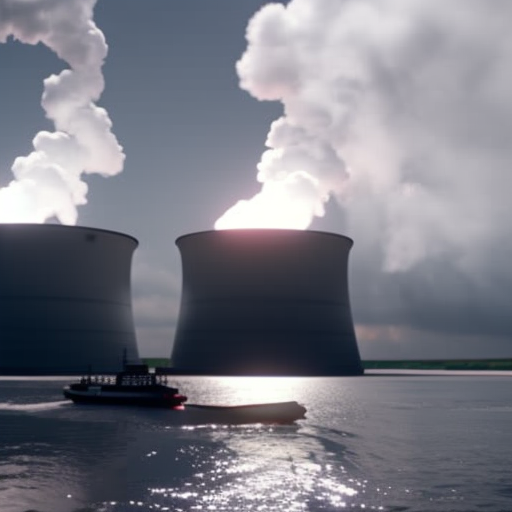SJVN’s Heat and Power Generating Green Hydrogen Project Starts Operation
SJVN's Heat and Power Generating Green Hydrogen Project Starts Operation Mercom India

SJVN’s Green Hydrogen Pilot Project Starts Operation

Introduction
SJVN has commenced the commercial operation of its multi-purpose (combined heat and power) green hydrogen pilot project at its 1.5 GW Nathpa Jhakri hydropower project in Himachal Pradesh.
Project Details
- The project will generate electricity through its 25-kW fuel cell and produce green hydrogen for the hydropower project’s High-Velocity Oxygen Fuel (HVOF) Coating facility.
- It is expected to produce 14 kgs of green hydrogen during its daily 8-hour operational window.
- The project has the facility to store the green hydrogen at a pressure of 30 bars in 12 m3 tanks.
- The green hydrogen will be produced using alkaline electrolyzers of 20 Nm3/hour capacity, fueled by clean energy supplied from SJVN’s 1.3 MW solar power project in Wadhal, Shimla.
Utilization of Green Hydrogen
Besides producing power, green hydrogen will be utilized to coat the turbine’s underwater parts for HVOF.
Government’s Green Hydrogen Mission
“Aligned with National Green Hydrogen Mission of the Government of India, SJVN’s Green Hydrogen Pilot Project is poised to accelerate the development of green hydrogen production infrastructure in the power sector, thus establishing green hydrogen as a clean energy source,” said the Chairperson and Managing Director of SJVN, Geeta Kapur.
Centralized Operation Announcement
SJVN also announced the centralized operation of its 1,500 MW Nathpa Jhakri hydropower project and 412 MW Rampur hydropower project.
Incentives for Green Hydrogen Production
In February this year, the Ministry of New and Renewable Energy (MNRE) released an implementation framework to incentivize the production of 200,000 MT of green hydrogen annually. The incentives will be granted for three years.
Government Pilot Projects
With an aim to decarbonize the shipping, steel, and transportation sectors, the government has launched pilot projects to use green hydrogen in trucks and buses, the shipping industry, and the steel industry. The program plans to support the deployment of green hydrogen through fuel cell electric vehicles (FCEVs) and hydrogen internal combustion engine (ICE) based trucks and buses in phases.
SDGs, Targets, and Indicators
| SDGs | Targets | Indicators |
|---|---|---|
SDG 7: Affordable and Clean Energy |
|
|
SDG 9: Industry, Innovation, and Infrastructure |
|
|
SDG 13: Climate Action |
|
|
Analysis
1. Which SDGs are addressed or connected to the issues highlighted in the article?
The issues highlighted in the article are connected to SDG 7: Affordable and Clean Energy, SDG 9: Industry, Innovation, and Infrastructure, and SDG 13: Climate Action.
2. What specific targets under those SDGs can be identified based on the article’s content?
Based on the article’s content, the specific targets that can be identified are:
– Under SDG 7:
– Target 7.2: Increase substantially the share of renewable energy in the global energy mix.
– Target 7.3: Double the global rate of improvement in energy efficiency.
– Under SDG 9:
– Target 9.4: Upgrade infrastructure and retrofit industries to make them sustainable.
– Target 9.5: Enhance scientific research, upgrade the technological capabilities of industrial sectors.
– Under SDG 13:
– Target 13.2: Integrate climate change measures into national policies, strategies, and planning.
– Target 13.3: Improve education, awareness-raising, and human and institutional capacity on climate change mitigation, adaptation, impact reduction, and early warning.
3. Are there any indicators mentioned or implied in the article that can be used to measure progress towards the identified targets?
Yes, there are indicators mentioned or implied in the article that can be used to measure progress towards the identified targets. These indicators include:
– Electricity generation through a 25-kW fuel cell and production of green hydrogen using alkaline electrolyzers fueled by clean energy from a solar power project (related to SDG 7 targets).
– Utilization of green hydrogen for coating turbine’s underwater parts and development of green hydrogen production infrastructure in the power sector (related to SDG 9 targets).
– Production of green hydrogen as a clean energy source and decarbonization of sectors such as shipping, steel, and transportation through the use of green hydrogen (related to SDG 13 targets).
SDGs, Targets, and Indicators
| SDGs | Targets | Indicators |
|---|---|---|
SDG 7: Affordable and Clean Energy |
|
|
SDG 9: Industry, Innovation, and Infrastructure |
|
|
SDG 13: Climate Action |
|
|
Behold! This splendid article springs forth from the wellspring of knowledge, shaped by a wondrous proprietary AI technology that delved into a vast ocean of data, illuminating the path towards the Sustainable Development Goals. Remember that all rights are reserved by SDG Investors LLC, empowering us to champion progress together.
Source: mercomindia.com

Join us, as fellow seekers of change, on a transformative journey at https://sdgtalks.ai/welcome, where you can become a member and actively contribute to shaping a brighter future.







